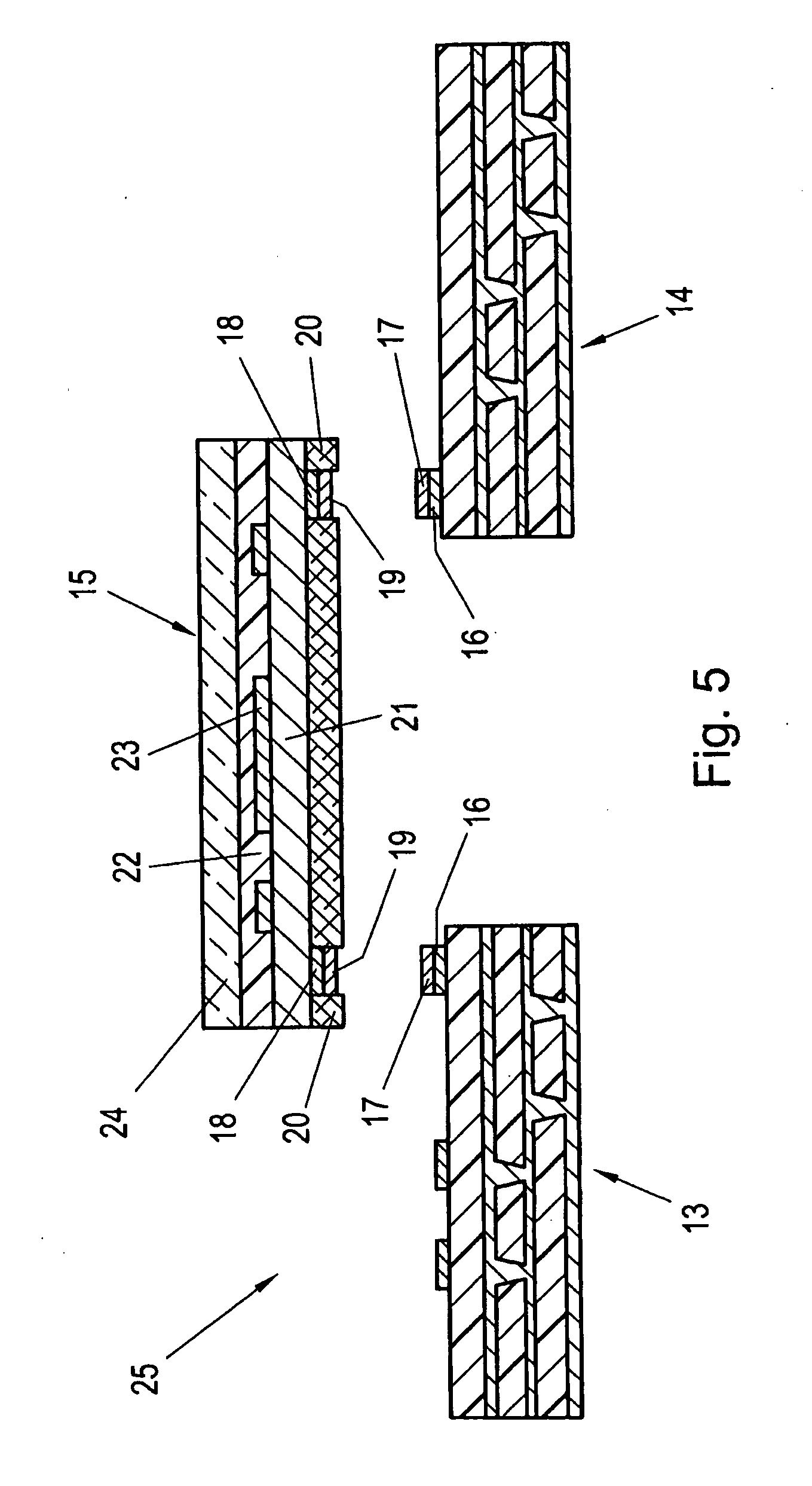Method for producing a printed circuit board and use and printed circuit board
a technology of printed circuit board and tensile strength, applied in the direction of application, show cabinet, soldering media, etc., can solve the problems of insufficient tensile strength of wire-bond connection, and high cost, so as to improve the tensile strength or enhanced tensile strength exhibiting, the effect of improving the adhesion of individual components
- Summary
- Abstract
- Description
- Claims
- Application Information
AI Technical Summary
Benefits of technology
Problems solved by technology
Method used
Image
Examples
Embodiment Construction
[0030]FIGS. 1 to 4 depict different method steps in the performance of the method for fixing a component to or in a printed circuit board.
[0031]In FIG. 1 it is shown that, on a printed circuit board generally denoted by 1, in the region of contact pads each denoted by 2 and, for instance, made of copper, a barrier layer 3 is arranged on this copper layer 2, on which barrier layer two layers 4 and 5 of different solder materials are subsequently arranged or applied.
[0032]In a similar manner, a barrier layer 8 is each arranged or applied on an electronic component 6 to be connected with the printed circuit board 1 in the region of contact sites or pads 7, on which solder layers 9 and 10 of different materials are again subsequently applied or provided.
[0033]FIG. 1A depicts the subregion A of the component 6 according to FIG. 1 on an enlarged scale, wherein it is apparent that, on the contact layer 7, which is illustrated with an exaggerated thickness, a barrier layer 8 is subsequently...
PUM
| Property | Measurement | Unit |
|---|---|---|
| Temperature | aaaaa | aaaaa |
| Temperature | aaaaa | aaaaa |
| Temperature | aaaaa | aaaaa |
Abstract
Description
Claims
Application Information
 Login to View More
Login to View More - R&D
- Intellectual Property
- Life Sciences
- Materials
- Tech Scout
- Unparalleled Data Quality
- Higher Quality Content
- 60% Fewer Hallucinations
Browse by: Latest US Patents, China's latest patents, Technical Efficacy Thesaurus, Application Domain, Technology Topic, Popular Technical Reports.
© 2025 PatSnap. All rights reserved.Legal|Privacy policy|Modern Slavery Act Transparency Statement|Sitemap|About US| Contact US: help@patsnap.com



